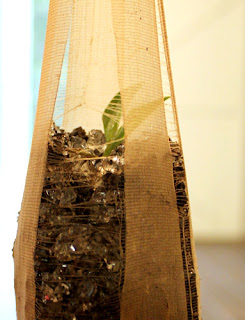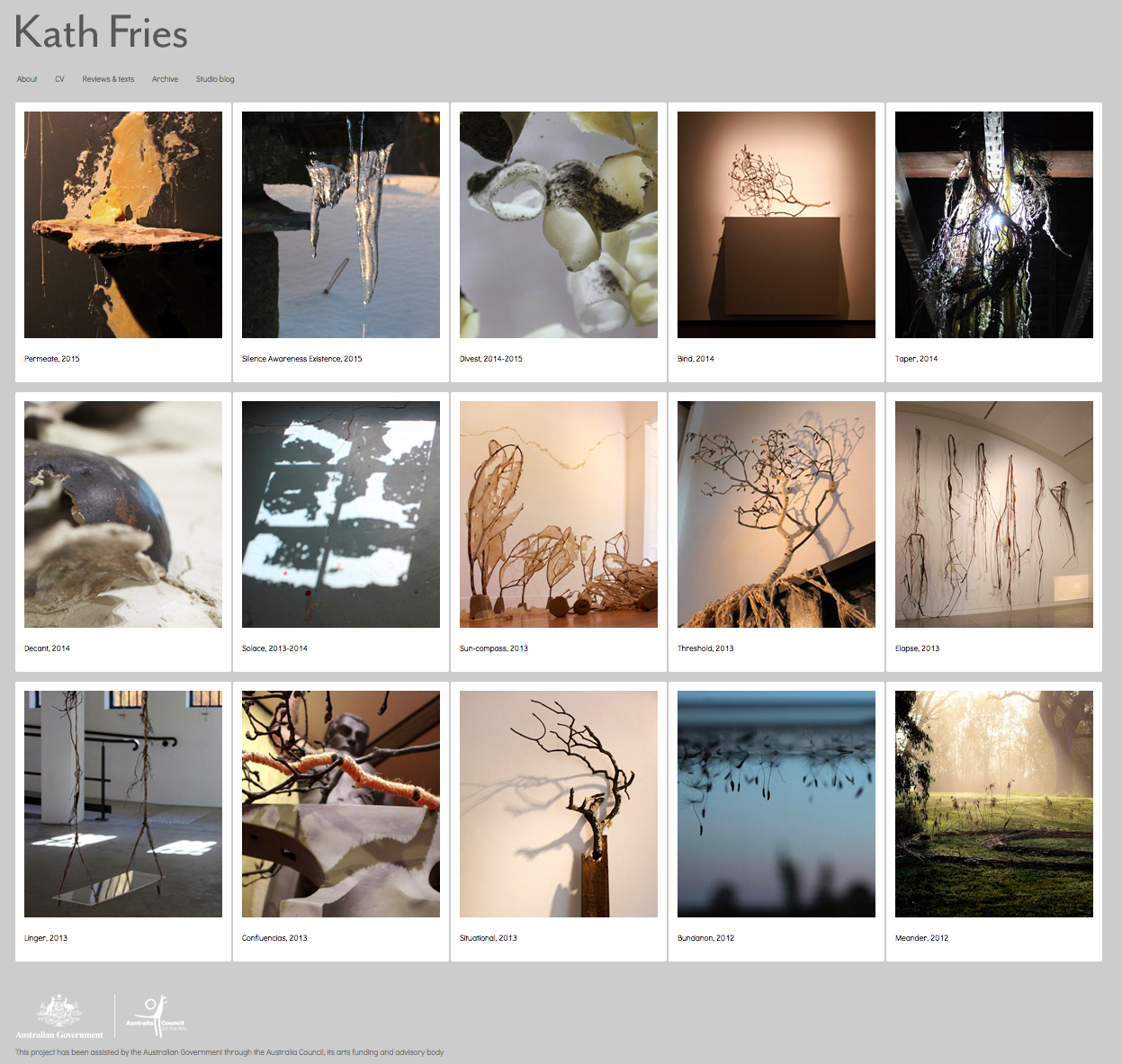Aqua-librium
to find a point of balance using the flow of water
An exhibition of site-responsive works by
Kath Fries (installation) & Julie McConaghy (painting)
Exhibition opening: 5pm - 8pm, Friday 9 December
Artist talks: 2pm Sunday 18 December
Open daily: 10 to 18 December, 2 - 6pm daily
Location: Primrose Park Gallery, Matora Lane (off Young Street), Cremorne, NSW 2090
Over the past six months Kath Fries and Julie McConaghy have shared the Primrose Park studio. Although their practices are vastly different, the waterways and parklands surrounding the studio have influenced both artists' works.
Primrose Park was an estuarine bay until the early 1890s when the area was reclaimed and turned into North Sydney's first sewage works, then in the 1930s it was converted into the sports-oval and parklands that we see today. However, the streams that originally flowed across the area continue to seep through the ground and during heavy rainfall the concrete aqueducts and canals surge with storm water runoff.
Kath Fries has created a series of site-specific installations on the heritage concrete structures of the old sewage works. Her installations are positioned where weeds grow in direct response to the flow of water through the site. In other areas Fries has transplanted local weeds and used water-saving crystals and pantyhose to create tiny gardens, playfully commenting on what we consider to be waste in one situation and valuable in another.
Julie McConaghy has interpreted the waterways of Primrose Park by depicting movement and fluidity using gouache, oil paint, torn paper and collage. She mixes varying paint thicknesses and uses colour and texture to represent the changing tones and forms of the water. Observing a range of weather conditions, seasons and changing daylight, McConaghy has made a series of sketches and small studies as a key part of her process in creating larger paintings.
Biographies
Kath Fries
Kath Fries recently graduated from Sydney College of the Arts with a Master of Visual Arts. Last year she won the 2010 Japan Foundation New Artist Award and is a recipient of a 2011 ArtStart Grant from the Australia Council. She has been an exhibiting finalist in the 2011 Fauvette Loureiro Memorial Artists Travel Scholarship; 2011 David Harold Tribe Sculpture Award; 2007 Redlands Westpac Art Prize and 2003 Gosford Regional Gallery Emerging Award. She has been an artist-in-residence at The Lock-Up Newcastle in 2011, at Laughing Waters Eltham VIC in 2009 and has exhibited in various national sculpture festivals.
Julie McConaghy
Julie McConaghy studied painting at National Art School and Charlie Sheard Studio School. She has been an exhibiting finalist at Drawing Week National Art School 2006, Dobell Prize for Drawing Art Gallery NSW 2008 and Parliament Plein Air Painting Prize 2009. She has exhibited at Charles Hewitt Gallery, National Art School and Mosman Art Gallery.
For more information and images please contact Kath Fries kathfries@gmail.com












































































%2BWhite%2C%2BBRANCH%2B3d.jpg)














.jpg)














